We live in the municipality of Inderøy and its official flower is the dandelion. When one looks at the fields in Inderøy during the second half of May, it can be seen why this flower has been chosen.
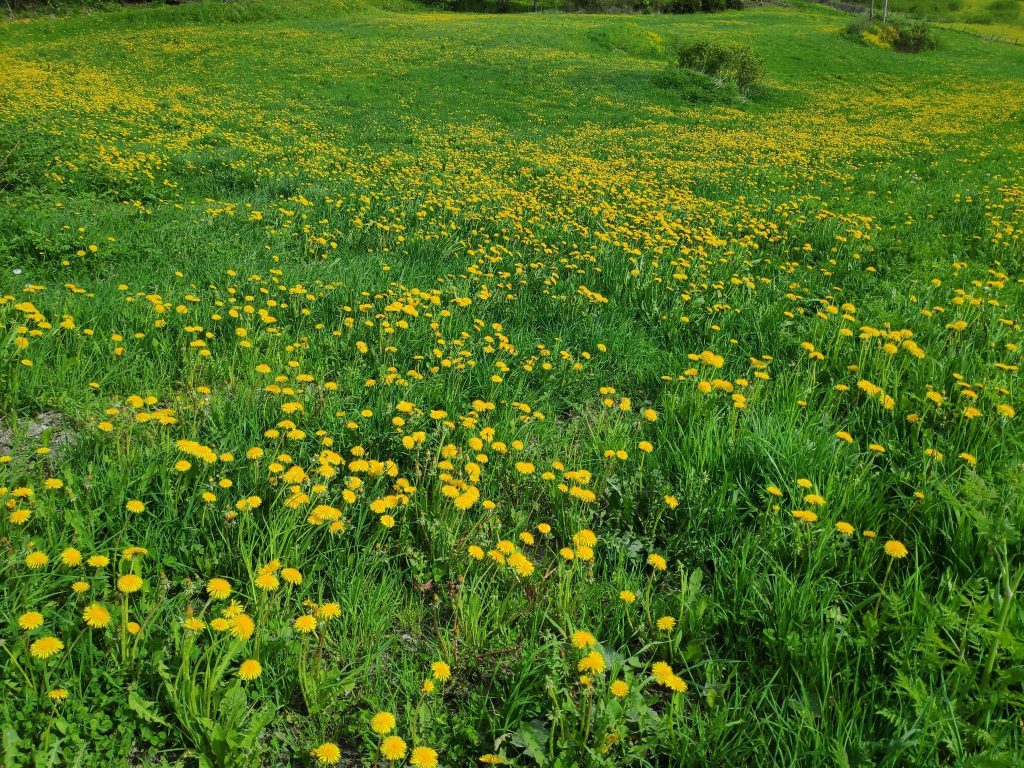
As an agricultural municipality, there are many fields in Inderøy which are devoted to growing grass to feed animals. These fields are not plowed every year and each year the crop of dandelions in any given field will increase. Then the farmer plows the field and the field becomes primarily green the first summer.
The Latin name for the common dandelion is Taraxacum officinale. In Norwegian it is called løvetann (lion’s tooth). The English name, dandelion, seems to come from the French name for the plant, dent-de-lion, which also means the lion’s tooth.
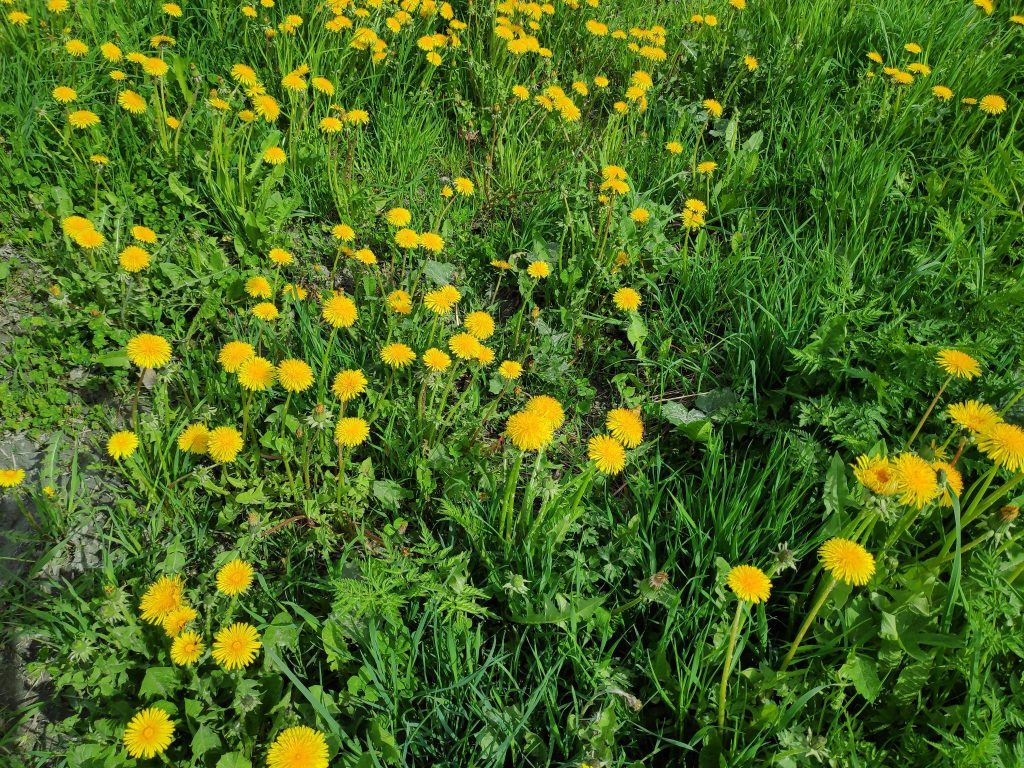
Here in Norway, the dandelion will have its first flowering in May, or perhaps June at higher altitudes. Where I live, it will be found along the edges of roads as well as in gardens and fields. Beekeepers say that it is an important flower for the bees early in the season. This year there have been comments in the Norwegian press to refrain from cutting one’s lawn and letting wild flowers grow, as the bees need the nourishment.
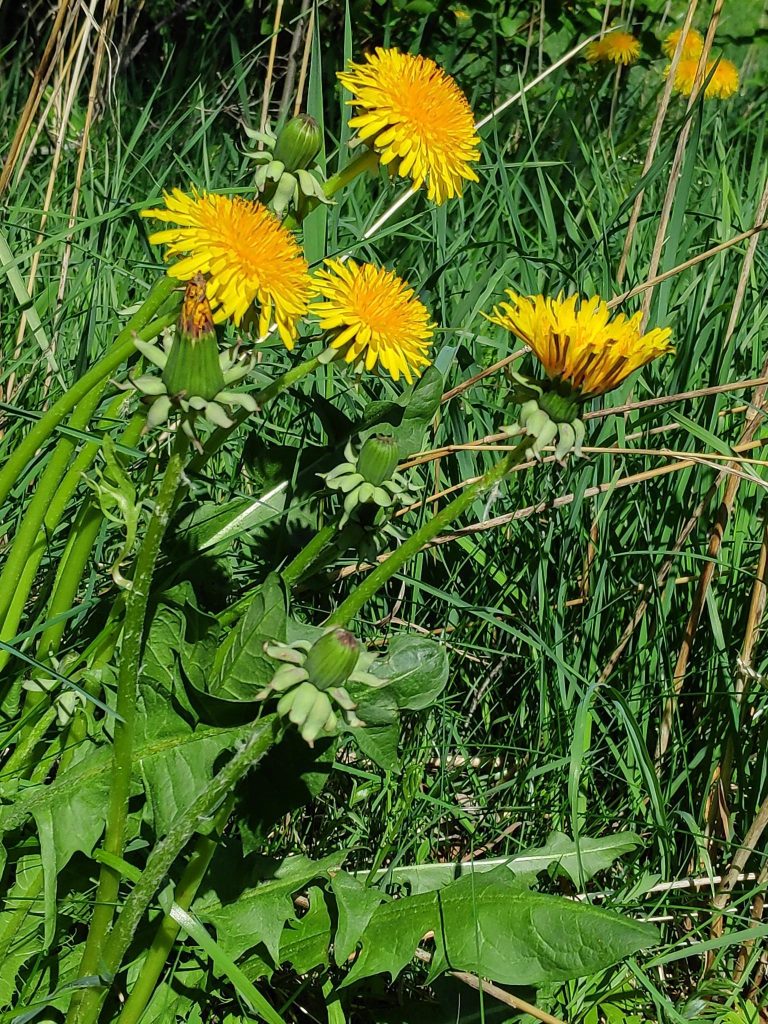
Dandelions have a characteristic yellow flower that opens wide on sunny days and long toothed leaves. When they grow in the open, they are very upright plants. When they grow with other plants, they can grow very tall in the competition for sunlight. They do not have to be pollinated and therefore can produce seeds that have the same genetic information as the parent flower. This means that even without insects, the flowers will go to seed. The flower grows on a hollow stem and the leaves grow separately from the long root. If the leaves and flower are broken off, the plant will regrow from the root.
All parts of the dandelion are edible and provide vitamins A and K, as well as calcium and iron.
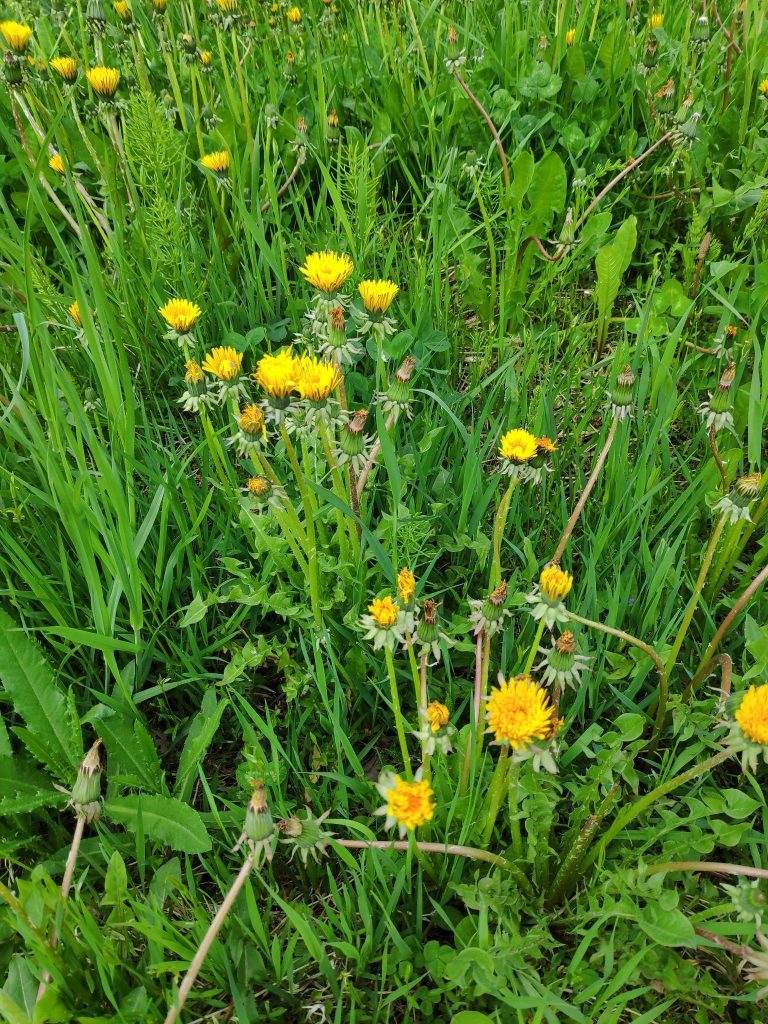
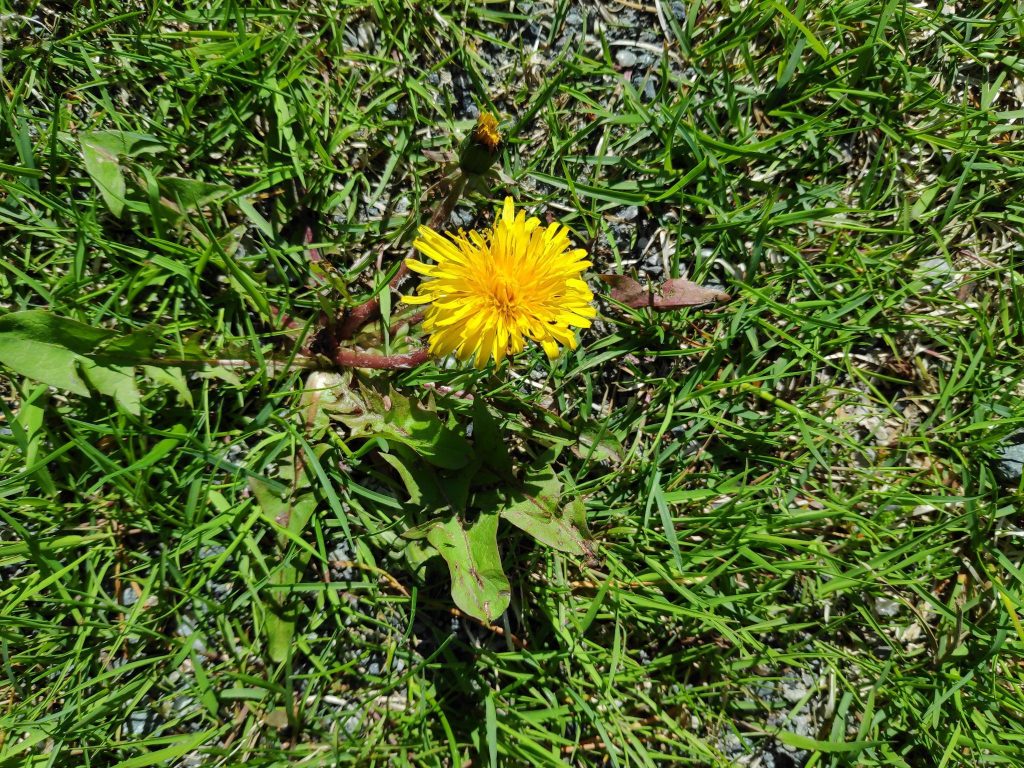
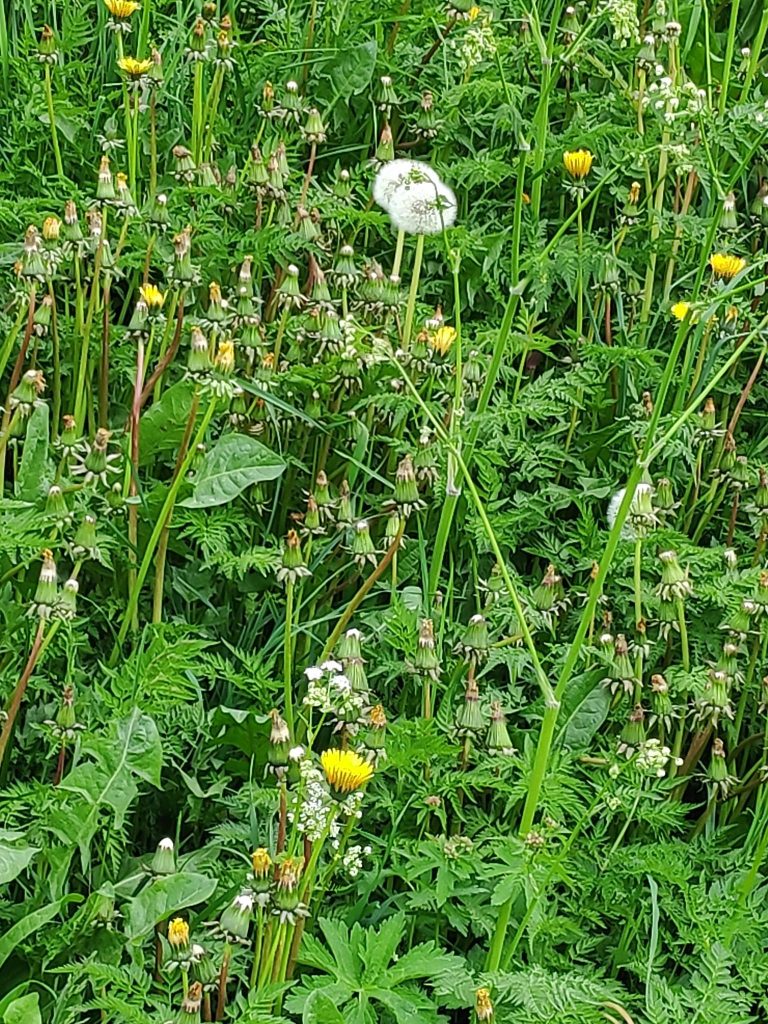
I usually consider the dandelion a weed and will remove as many as possible before they go to seed. However, I do find it an attractive flower and quite understand how it is an important flower for bees.

Hurra for løvetann!